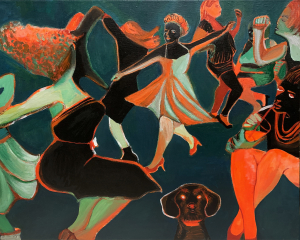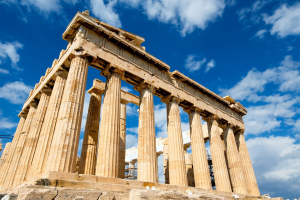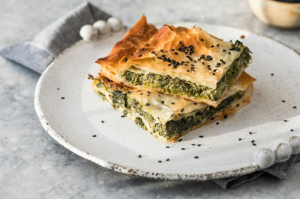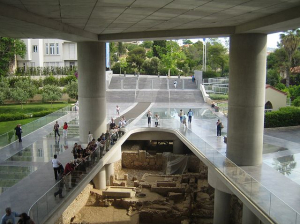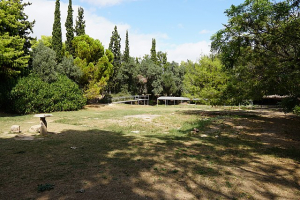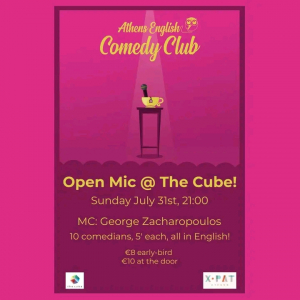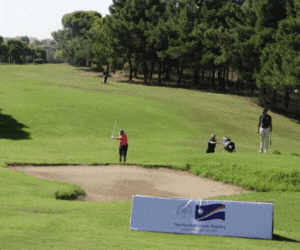LIFE & CULTURE
XpatAthens
15 Fun Holiday Activities To Enjoy With Your Kids
Beach Picnic
Swimming
Muscle strengthening, improving the cardiorespiratory system, relieving stress, and promoting socialization are just a few benefits of swimming.
Visiting Museums & Archeological Sites
With children entitled to reduced admission to most museums, visiting museums and sightseeing, in general, is both educational and economical for children and parents!
Sailing
Sailing is a great sport for children to learn to love the sea and overcome their fear of water.
Reading
Reading is not just an individual activity. You can read a book together, as a family, one chapter at a time. Reading will automatically become more interesting for both you and the children.
Board Games
All-time classic, beloved, mystery, strategy, or fantasy, board games sharpen the mind and encourage fair play.
Cooking
Cooking is a great way to spend time together and help children express their creativity and feel that they contribute to the family dynamic.
Hiking
Hiking is one of the best hobbies you can start as a family, as it allows you to explore breathtaking places and improve overall well-being by promoting physical activity.
Open-air Cinema
In Greece, every neighborhood has an open-air cinema, ideal for those who want to enjoy a movie under the starry sky.
Diving
Diving is an exciting activity for everyone. You and your children, accompanied by a professional diver, can become underwater explorers and discover the seabed's magical secrets.
Cycling
Everyone knows that some of the best childhood memories feature bikes as perfect companions for all of our adventures.
Camping
Nature, less screen time, spending quality face-to-face time with other campers, and the overall feeling of pure relaxation are a few reasons you should try this unique experience.
Ball Games
Sports are essential for the mental and physical health of children and adults. A family game of basketball, football, or any other sport, is a great way to promote sportsmanship.
Theater Show
Theatrical education should be an integral part of children’s extracurricular education as it positively contributes to increasing concentration, attention, and empathy.
Kayaking
Kayaking can be done on rivers, lakes, or the sea and is an experience you will surely love.
2021: A Record Year For The Growing Greek Startup Scene
StartupBlink Global Startup Ecosystem Map
According to the StartupBlink world index, Greece ranked number 48 globally climbing 6 places since last year with an upward trend that is expected to be recorded in the next report. Greece’s rise is mainly due to the rising startup ecosystem of Athens, as the Greek capital is high on the list of the top 100 ecosystems in the field of recreation, in 51st place. Athens is the top-ranked Greek city in an index of 1,000 cities ranking at 132. Greece also ranks at number 18 for startups in Western Europe and is an ideal place to locate Social & Leisure, Transportation, and Foodtech startups.
According to the Startup Blink report, Greece remains resilient, despite the financial crisis of 2008 and the pandemic of 2020. Greece is an EU country located at the intersection of Europe, Asia, the Middle East, and North Africa having at the same time the advantage of a highly-skilled English-speaking workforce. In 2021 startup funding was increased and important exits were registered including two unicorn companies. This has attracted worldwide attention to the Greek startup ecosystem and its technological capabilities as the country has the potential to become a regional technology hub.
To read this article in full, please visit: greeknewsagenda.com
FokiaNou Art Space - On The Magic Mountain
Opening: Thursday 16 June, 18.00
Duration: 16 June – 2 July, 2022
Hours: Thursday – Saturday 18.00-21.00
A Greek Beach Among The 5 Most Photographed On Instagram
Money.co.uk, analyzed over 26 million Instagram hashtags to determine which are the most picturesque and beautiful beaches in the world.
The most Instagrammed in the world
The study ranked beaches’ popularity according to the number of Instagram posts made of them per meter of beach. According to the hundreds of thousands of posts of beaches on the social media site, Bali’s Kelingking Beach is the most popular beach in the world.

Credit: Shrigusti/Wikimedia Commons
The findings also showed that half of the world’s most popular beaches to immortalize in picture form are located in Europe. However, the second most-uploaded beach could not be further away, in Sydney, Australia.
Bondi Beach ranked second on the list, with the mammoth 1.000-meter-long sandy crescent-shaped cove having 1,776 pictures per meter posted on the website. The beach’s name comes from the Aboriginal, meaning “water breaking over rocks,” and calls to both Sydney city-dwellers and tourists alike.
Greece’s most popular beach on Instagram
The most exquisite beach in Greece features a stunning stretch of fine white sand that is 182 meters long; a staggering 403 pictures are posted on the social media site for each meter of the beautiful bathing spot.

Credit: dronepicr, Creative Commons Attribution 2.0
Navagio Beach was originally known as “Agios Georgios Beach.” On October 2, 1980, the Freightliner MV Panagiotis ran aground in the waters around Zakynthos Island during stormy weather and poor visibility. It has been rumored for years that the ship was smuggling contraband, including cigarettes and alcohol.
The Panagiotis was abandoned after running aground, and because of the extraordinary difficulty that would be involved in salvaging it, it still rests half-buried in the limestone gravel of the beach, which is now known worldwide by its nickname “Navagio,” or (“Shipwreck”).
To read this article in full, please visit: greekreporter.com
Image Credit: @ivanmln
Daily Life In Ancient Greece: What It Was Like To Live In Athens & Sparta
Despite the fact that they shared the same heritage and language, ancient Athens and Sparta were wildly different with clashing lifestyles, cultures, and values.
Often, the two city-states were not on the friendliest of terms.
The Spartans were warriors, disciplined and strong, and always ready to die for their homeland—hence the word “Spartan,” which is also used today, meaning someone who lives an austere life and is indifferent to pleasures and luxuries.
Athenians, on the other hand, were educated, and those who were not soldiers were philosophers, politicians, writers of tragedies and comedies, musicians, and sculptors.
Growing up in Sparta: a life of self-denial
Life in Sparta was one of simplicity and self-denial. Children were children of the state more than of their parents. They were raised to be soldiers, loyal to the state, strong and self-disciplined.
When a Spartan baby was born, soldiers came to the house and examined it carefully to determine its strength. They bathed the baby in wine rather than water to see its reaction.
If a baby was weak, the Spartans would throw it off a cliff (the Kaiadas) or take it away to become a slave (helot).
Life in ancient Athens was different than in the rest of Greece
Men were the only people considered citizens, so they were frequently seen around the town conducting their business along with slaves.
Men went to the market, met with friends to discuss politics, and went to temples to worship. Interestingly, it was men who did all the shopping and errands outside of the house. Athenian men had a special room in the house just for themselves. This room was for lounging around and entertaining male guests; no women except for slaves and entertainers were allowed inside this room. Contrary to Spartan men, the educated, well-to-do Athenians were very much interested in the arts, philosophy, and aesthetics.
To read this article in full, please visit: greekreporter.com
Delicious Greek Dishes Ideal For Vegans
Traditional Greek cuisine consists mainly of Vegetarian and Vegan recipes. From luscious salads to healthy oily stews, hearty homemade pies and so much more. All cooked in a homely manner that fills your belly and keeps you going through the day.
These foods are what make our everyday meals, and are also, to begin with, one of the reasons why the Greek diet is considered very healthy.
Greek Yemista - Stuffed Vegetables With Rice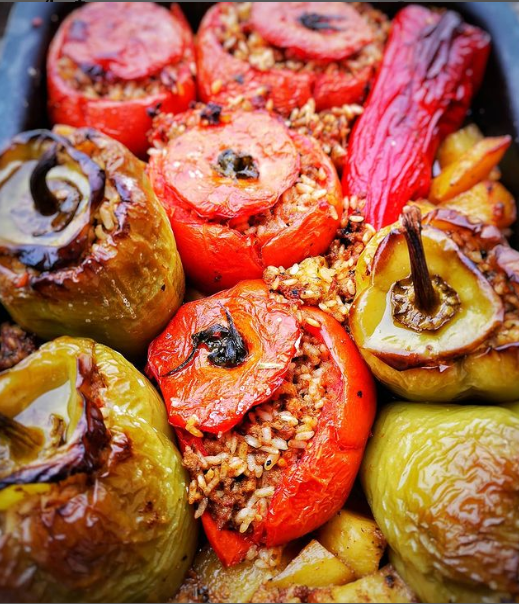
@panos_louis
In a Vegan diet, the lack of dairy and animal protein may sometimes leave you with a growling stomach. Rice can make up for this, giving you a very satisfying and energy-boosting meal. These Rice Stuffed Veggies aka Yemista, are an absolute must in this case. They're slowly baked in the oven, stuffed with a fresh vegetable, mint, & rice filling, and potatoes on the sides. Yummy!
Greek Butter Beans - Gigantes Plaki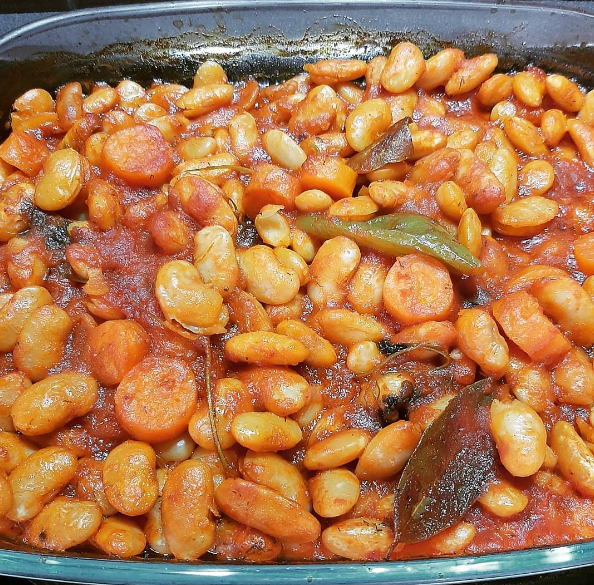
@vasokatsanikaki
One of my all-time favorite dishes. Butter beans or "Gigantes" as we call them in Greece. Tastier than any other type of bean!
Traditional Greek Stewed Green Peas
@greka_foods
If you like peas, then you will definitely love this recipe. And well, even if you aren't really fond of them then you may wanna give this recipe a go. The fresh tomato, along with the carrots give an extra sweetness to peas, that makes them more flavorful than ever. They taste so much better than steamed peas do. Trust me!
Spanakopita - Greek Spinach Pie With Homemade Phyllo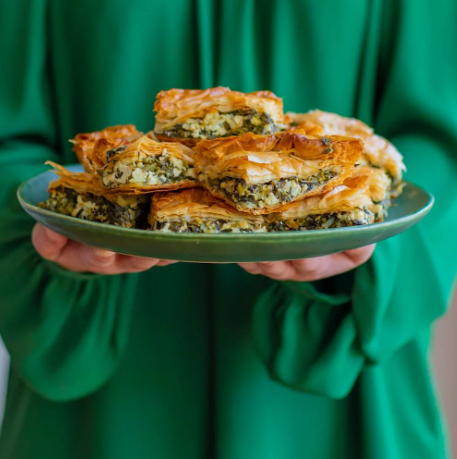
@effigeorgia
Spanakopita is a well-known and well-loved Greek food. But it gets even better when you make it from scratch. Spinach is a real superfood, that's full of flavor, especially when combined with fresh herbs, olive oil, and a very crispy, homemade phyllo pastry.
Vegan Eggplant Gyros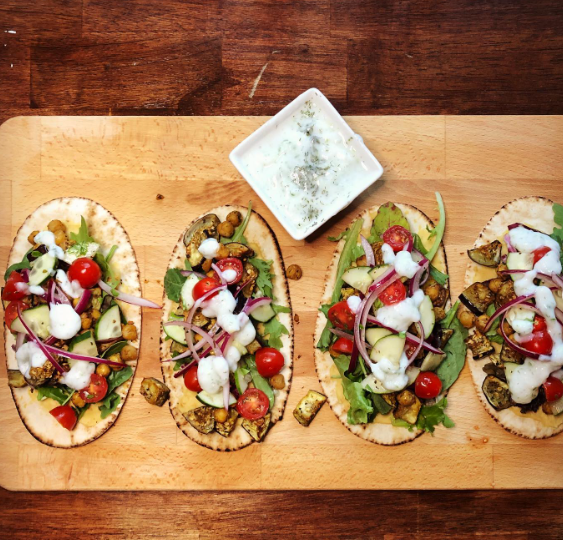
@_minibattheveggiefoodie_
One of the all-time- favorite Greek dishes "Gyros" comes in the form of eggplants in this recipe. Eggplants are a very flavorful meat substitute. Wrapped up in warm pita bread along with juicy tomatoes and crispy cucumber.
To read this article in full, please visit: realgreekrecipes.com
Tickets Reduced For Acropolis Museum’s Birthday
The reduced, 5-euro rate will apply throughout the day, from 8 a.m. to 4 p.m.
At 3 p.m., visitors will have the opportunity to enjoy music from the Woodwind Quintet of the Athens State Orchestra on the ground floor of the building. [AMNA]
Originally published on: ekathimerini.com
Akadimia Platonos Revamp Set To Go Through
The announcement came after the Municipality of Athens, the Greek Culture Ministry, and the Academy of Athens, Greece’s oldest research institution, signed a memorandum of cooperation for the redevelopment of the archaeological site at Akadimia Platonos.
Describing the project as a “very important step towards the revival of Akadimia Platonos”, Athens Mayor Kostas Bakoyannis went on to note that it will focus on three key areas: “the necessary archaeological excavations, the creation of a new park, and of the City of Athens Museum”.
Excavations are scheduled to begin in the coming weeks, while work on the park, which includes the reconstruction of the playground, landscaping, signage, and lighting, will follow shortly after. Funding has been secured through the municipality’s “Adopt Your City” program from sponsors.
City authorities also announced that an architectural competition for the City of Athens Museum would be announced in the coming period.
To read this article in full, please visit: news.gtp.gr
Hard Rock Café Athens Celebrates Its 50th Birthday
The Party starts at 16.00, on June 14th, Specials of the day:
We go back to Seventies and “VINYL IS ALIVE”!!!
♪ Our Dj’s Gerasimos Fatouros and Manolis Kilismanis will entertain us with their unique collection of Vinyl’s!
♪ Happy Hours Cocktails (16.00 to 19.00)
♪ Complimentary Special Dessert of the day Coke Float (no minimum purchase required, dine in only).
So head down to Hard Rock Café Athens, Andrianou 52 and join us as we celebrate in style!
Athens English Comedy Club | Open Mic Night @ The Cube
Founded in 2019, the Athens English Comedy Club is the first, and only, purely English comedy club in Greece, bringing you local and international comedians, right in the heart of Athens.
The Cube is a co-working, startup cluster space in the heart of the city, hosting the best of Athens innovators in technology & making space.
Join us on Sunday July 31st on the rooftop of The Cube, for an open mic night under the stars, with a view of the Acropolis!
10 comedians, 5’ each, all in English.
It'll be a mix of everything. A potluck of comedy. Experienced comedians trying out new material, new comedians trying out their hand at comedy, and everything in between.
MC: George Zacharopoulos
Tickets: €8 early-bird / €10 on the door




